Analysis
Art Brussels Powers Ahead as European Sales Platform for Young Artists
Diligent design and discovery-oriented approach charm collectors.
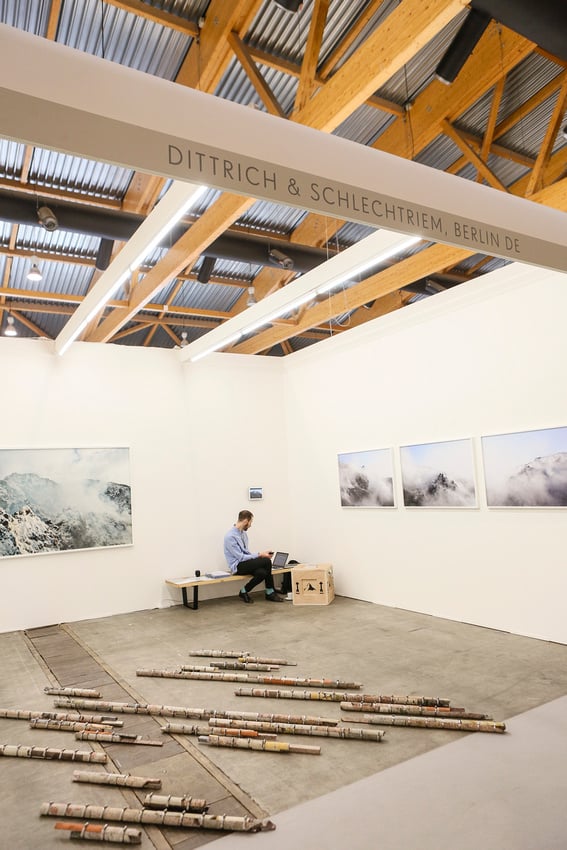
Photo: © Kristof Vrancken, courtesy Art Brussels.
Diligent design and discovery-oriented approach charm collectors.

Alexander Forbes


Art Brussels 2014
Photo: © Kristof Vrancken, courtesy Art Brussels
In recent years, as the number of art fairs worldwide has crept steadily towards 300 and the market has shifted increasingly towards contemporary art, many of those fairs have sought to position themselves as places for discovery. The trend mainly falls among those fairs on the regional but not provincial middle of the spectrum. It sees artists both very young and old but underappreciated cast out before new audiences to see if there’s a nibble on the end of the line.
The cynic might say this PR tendency towards discovery is mainly a quotient of big, international galleries saving their best stuff for Art Basel, Frieze, FIAC, or the Armory Show, a simple question of market expansion, and a chance for middling, regional galleries to sell middling if not mediocre art. Too often, that is the case. It leaves the critic and the discerning collector feeling that they’d rather not have “discovered” this art in the first place. But at Art Brussels, which closed on Sunday, the gimmick and reality not only match up to but also go on to exceed expectations.
Art Brussels is by no means a young fair. 2014 marks its 32nd edition. But, following the untimely death of former director Karen Renders in 2012, Katerina Gregos has used her newly created position of artistic director to inject an utmost sense of joie de vivre into Art Brussels’ halls. One-hundred-ninety galleries participated this year across three main sectors. But a first pass through left the impression that perhaps half as many were on display. The fair feels manageable. It can be walked in its entirety in little over an hour and seen thoroughly in an afternoon, a fact that likely aided in attracting international art world figures such as Hans-Ulrich Obrist, Simon and Michaela de Pury, Marc Spiegler, Noah Horowitz, and Suzanne and Michael Hort.
On average, booths are smaller and more consistent in their design than Brussels’ typical fair of comparison, Art Cologne. (Until this year, the pair ran during the same week.) As a result, conceptually driven curatorial statements in arranging the booths themselves are traded for approachability. Most booths allow one to see their entirety from the hallway. But rather than promote a quick scan of works on view in passing, it draws one in. Nearly every booth had at least one work that piqued my interest.
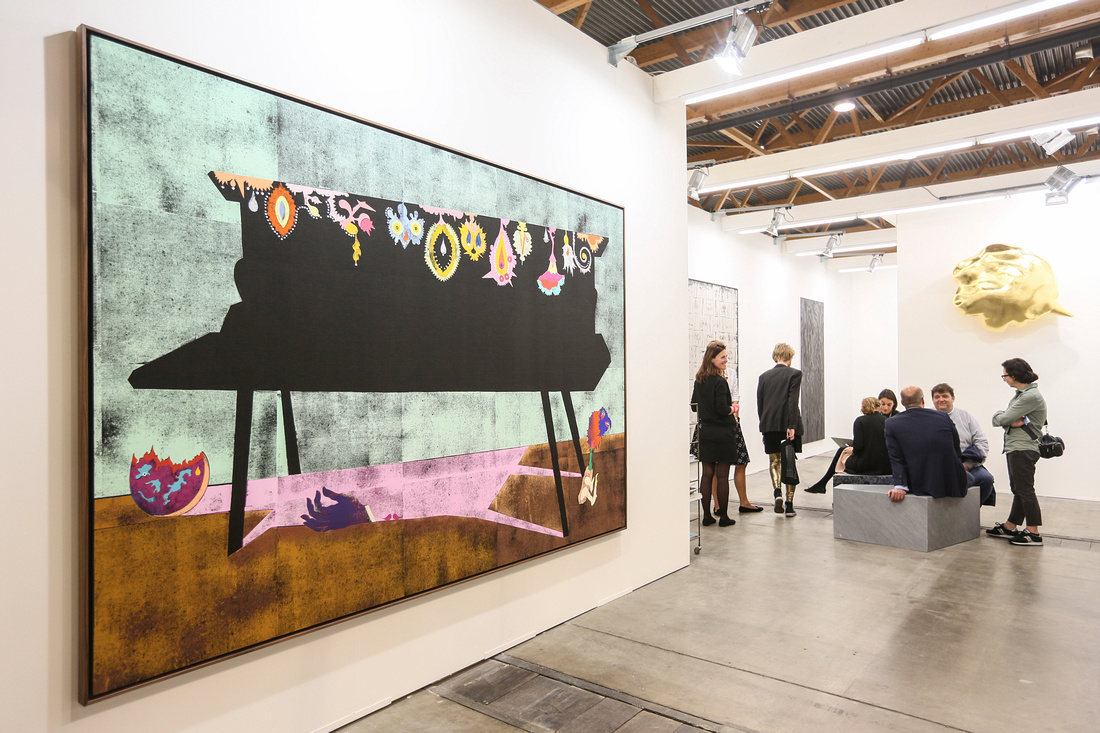
Galerie Rodophe Janssen’s Booth
Photo: © Kristof Vrancken, courtesy Art Brussels
Speaking with dealers across the fair’s sections, collectors were similarly covetous. Unsurprisingly, galleries based in or who have an outpost in Brussels saw the most success on opening day. As Art Brussels business director Anne Vierstraete noted with some humor Belgians, “collect very diligently and very intellectually but also very quietly.” Veteran sellers at the fair said known entities are the first to go.
Having opened a Brussels space last September, Galerie Daniel Templon made good on the trend. They sold Olivier Mosset’s Peinture (1970) early into the Thursday VIP preview for a reported €50,000-75,000. Japanese mixed media artist Chiharu Shiota was the booth’s star, however. Her State of Being (Children’s Dress) (2013) went for €30,000 in the fair’s early hours. By Friday evening, all of the artist’s works in the booth had been sold, including one sizable installation.
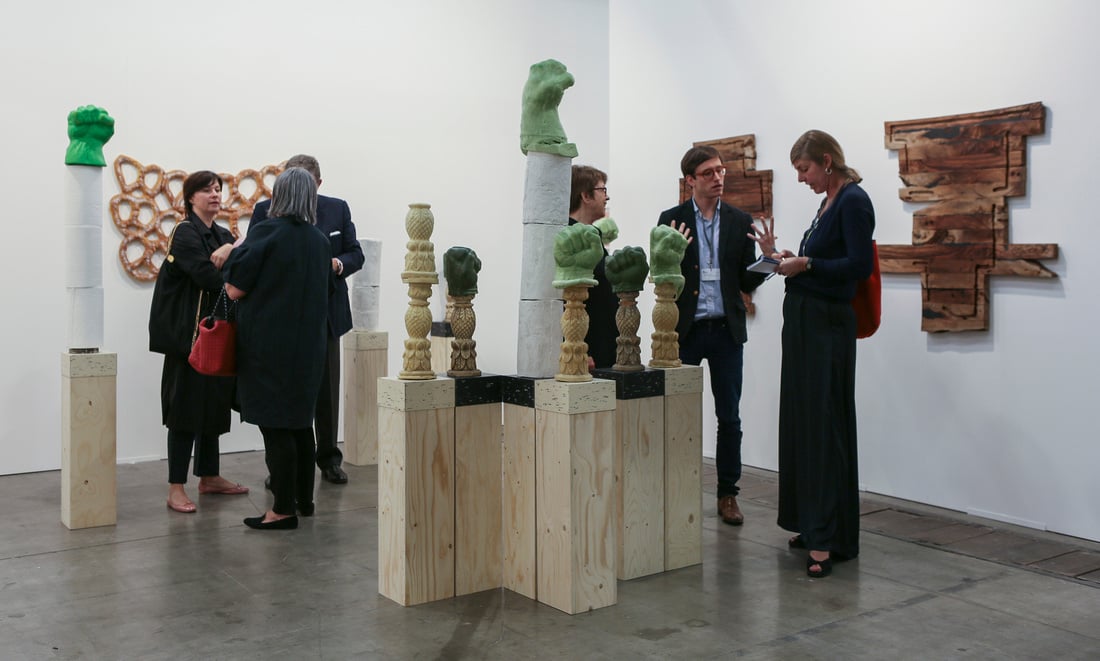
Catharine Ahearn’s Solo Booth with Office Baroque Gallery
Photo: © Kristof Vrancken, courtesy Art Brussels
Brussels’ Office Baroque Gallery had nearly sold out their entire booth halfway through the preview on Thursday. Works by Mathew Cerletty went for €40,000. He had opened a show in the gallery space on Wednesday. Photographs by Leigh Ledare were being snatched up at €18,000. The gallery sold all the works from their secondary, solo presentation of Catharine Ahearn. The works were priced from €3,000-40,000. Ahearn was also awarded the €10,000 Pirelli Prize for the best solo presentation at Art Brussels.
Almine Rech was also selling strongly. The gallery has spaces in Brussels in Paris and will open a third location in London this month. Abstract knit paintings by Brent Wadden, whose gallery show also opened on Wednesday, were a particular hit with collectors. Works by Johan Creten and Ayan Farah also sold well.
Galerie Rodophe Janssen sold works by a wide swath of their artists including Gert & Uwe Tobias, Sean Landers, Thomas Lerooy, Adam McEwen, Torbjorn Rodland, and David Adamo. A director said the gallery consistently has overwhelming success at Art Brussels due to the hometown advantage in approaching cautious collectors.
Axel Vervoordt was one of six galleries to participate in an experimental new section of the fair, for which international curators were invited to mount a thematic group show in the booths, using artists both from within and outside their respective gallery’s program. Joel Benzakin’s From Here to Elsewhere was a hit at Vervoordt’s white cube of a stand, bringing in heavy foot traffic. Works by Jef Verheyen, Lucia Bru, Ann Veronica Janssens, and Anish Kapoor also sold.
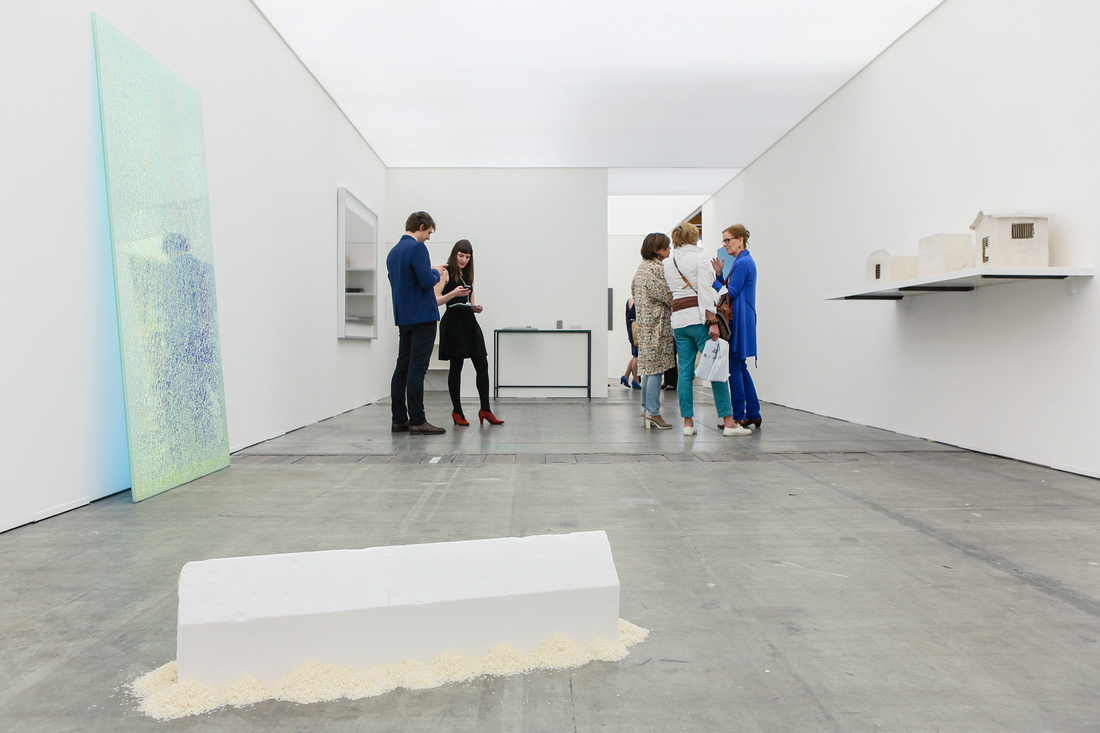
Axel Vervoordt Gallery’s Booth
Photo: © Kristof Vrancken, courtesy Art Brussels
Young Brussels and Brooklyn based gallery, Clearing, was extremely pleased with their first day performance, having placed several works by Marina Pinsky. The artist currently has an exhibition up currently at their Brussels location and was hanging around the booth during the Thursday preview, a strategy that seem to turn any early collector reticence towards emerging art into opened wallets.
Not all the fun was being had by the Belgian’s however. Marlborough Contemporary’s Andrew Renton said he was thrilled with the response the London-based gallery had seen at the fair this year. Early on, the gallery had sold the entire solo installation of works by artist-of-the-moment Diango Hernandez. The piece sees sheets of Plexiglas vertically bisect a plinth holding two halves of a watermelon and a dining table featuring a halved pineapple among other components. Marlborough also sold work by new addition to the gallery, Sigalit Landau as well as Belgian painter Koen van den Broek. Of the latter, Renton said, “I think we even forget how important he is in his home country. All [the collectors] want one; it’s just a question of what they can afford for what size.”
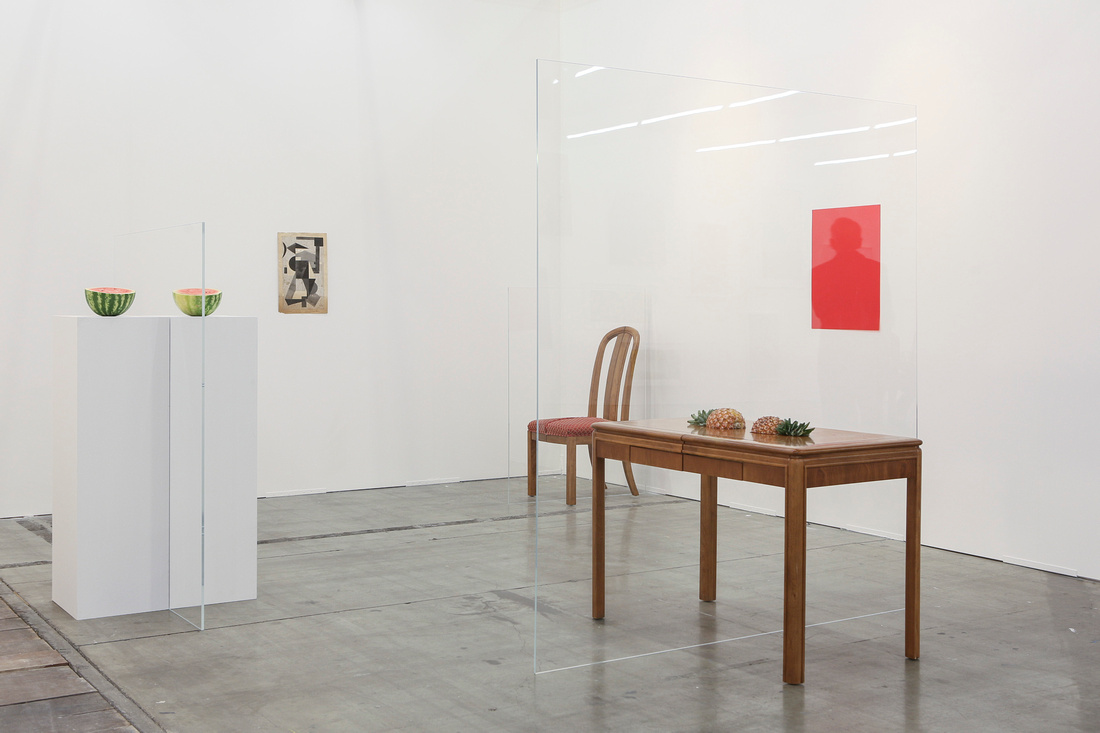
Diango Hernandez’s Solo Booth with Marlborough Contemporary
Photo: © Kristof Vrancken, courtesy Art Brussels
A large scale painting from 1959 by Milanese self-taught artist Dadamaino topped Cardi Gallery’s balance sheet for the fair. The asking price was €200,000. Sales of works by Enrico Castellani and Pier Paolo Calzolari were also in the offing.
Eighty-eight percent of galleries at Art Brussels this year have at least one European location, a strategy which Gregos says intends to remind us, “that Europe remains a very important center of artistic production.” Nonetheless, 14 American galleries such as LA’s Honor Fraser, and New Yorkers Elizabeth Dee and Eleven Rivington made the trip to Brussels. Eleven Rivington reported a “solid” performance across the fair’s four days, selling works to all, “new clients, including from Bruges, France, and Russia,” according to the gallery’s Augusto Arbizo. Two Mika Tajima pieces went for $15,000 each, and a fresh from the studio painting by Meyer Vaisman sold for $23,000. Work by Michael DeLucia also sold for an unreported sum.
Though Art Cologne is typically heavier on Berlin galleries, numerous young dealers from the German capital decided to try their luck in Belgium this spring rather than in the Rhineland. All reported very positive results, especially as the fair wore on into the weekend. Aanant and Zoo’s Julian Malte said that the fair, “fit really well to our program. I have the feeling the work is very serious,” while at the same time, it’s “also very fresh.” Collectors, “eager to discover new work,” had swarmed the booth in the early hours, showing particular interest in erasure works by Michael Müller.
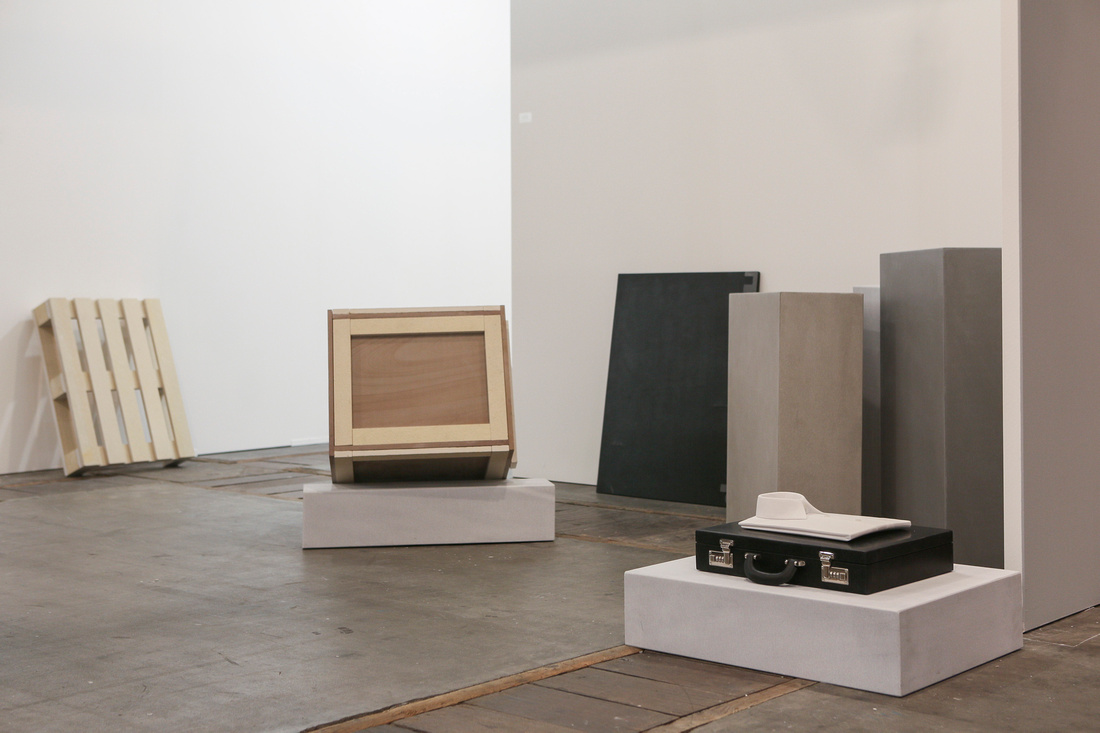
Christian Ehrentraut
Photo: © Kristof Vrancken, courtesy Art Brussels
Christian Ehrentraut said he was “thrilled with the response,” he had gotten for his solo booth of Andreas Blank. Blank carves various types of stone into near-perfect remakes of household objects such as light bulbs, trash bags, and sawhorses.
Sales were relatively slow at the start for Dittrich and Schlechtriem who brought a solo show of hit emerging artist Julian Charrière. But, by fair’s close on Sunday, the whole booth was sold out. Photographs from Charrière’s Panorama series went to collections in Paris, Cologne, and Brussels. His floor installation On the Sidewalk, I Have Forgotten the Dinosauria sold to prominent Belgian collector Frédéric de Goldschmidt. The piece sees cylinders of concrete and stone flooring that Charrière has collected from various locales over the years combined to create wonderfully minimalist rods of varying length.

Dittrich and Schlechtriem’s Solo Presentation of Julian Charrière
Photo: © Kristof Vrancken, courtesy Art Brussels
Reactions were of course not all positive. One dealer lamented that sales from French collectors were down significantly due, in his opinion, to the economic uncertainty for the country’s rich imposed by President Hollande. A Parisian art advisor commented that he found it hard to find either blue chip works of significant enough stature to warrant their price or new discoveries worth the financial risk.
For those of the more mercantile mindset, a propensity for dry, uncolorful, conceptual works, prime blue chip specimens, or even just a bit more money to toss around, Art Cologne remains a better option if going to only one spring fair on the Continent. But for others looking for fresh names (both of artists and gallerists alike) on which they’re willing to take some risk and an overall fair experience with slightly more spring in its step, Art Brussels is the one.